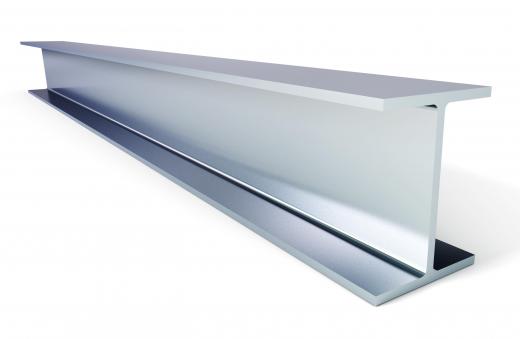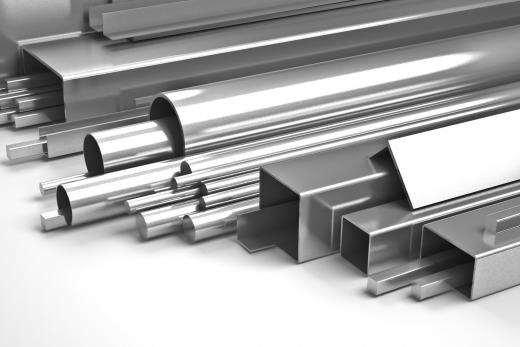Steel beams are structural supports which are made from steel, an alloy of carbon and iron which is famous for its strength. Beams are critical to the support of a building, spreading the load of the building laterally to ensure that it is evenly distributed, so that the building will not be prone to buckling or sagging. Steel is a popular material for beams for a number of reasons, not least of which is that it is incredibly strong, and can therefore be used in structures which would otherwise be considered structurally unsafe.
Manufacturers produce steel beams in a number of standardized shapes and lengths for different applications. It is also possible to order steel beams which are fabricated to order, which may be necessary when a building is unusual in design. Special shipping is usually required for the beams, because they are large and heavy, which makes them challenging to transport.

When architects design a new building or make plans to renovate an existing one, they need to think about where beams are going to be placed, and what materials they are made from. These beams are standard in many types of construction for their strength, with designers choosing a placement which meets structural and aesthetic needs. Architects and engineers also need to make additional calculations which consider the total weight of the building, seismic activity in the region where the building is located, and the distribution of open space in the building, as all of these can influence structural integrity.

Some steel beams are fabricated by welding, with companies taking steel sheets and cutting and welding them to the desired shape and size. Hot steel can also be molded or run through an extruder to generate beams of a desired style. After a beam has been finished, it can be clad in various materials for fire resistance or camouflage. Fire resistance is a major concern for steel beams as they can warp or melt in temperatures which can easily be reached in a structural fire.

The manufacturing process for steel beams includes a process in which the beam is rated to determine the amount of weight it can safely bear. The load rating on a beam usually needs to exceed the needs of the building for safety, and building inspectors may require proof that the beams installed in a structure will meet the legal requirements for building safety.
Ever since she began contributing to the site several years ago, Mary has embraced the exciting challenge of being a About Mechanics researcher and writer. Mary has a liberal arts degree from Goddard College and spends her free time reading, cooking, and exploring the great outdoors.

